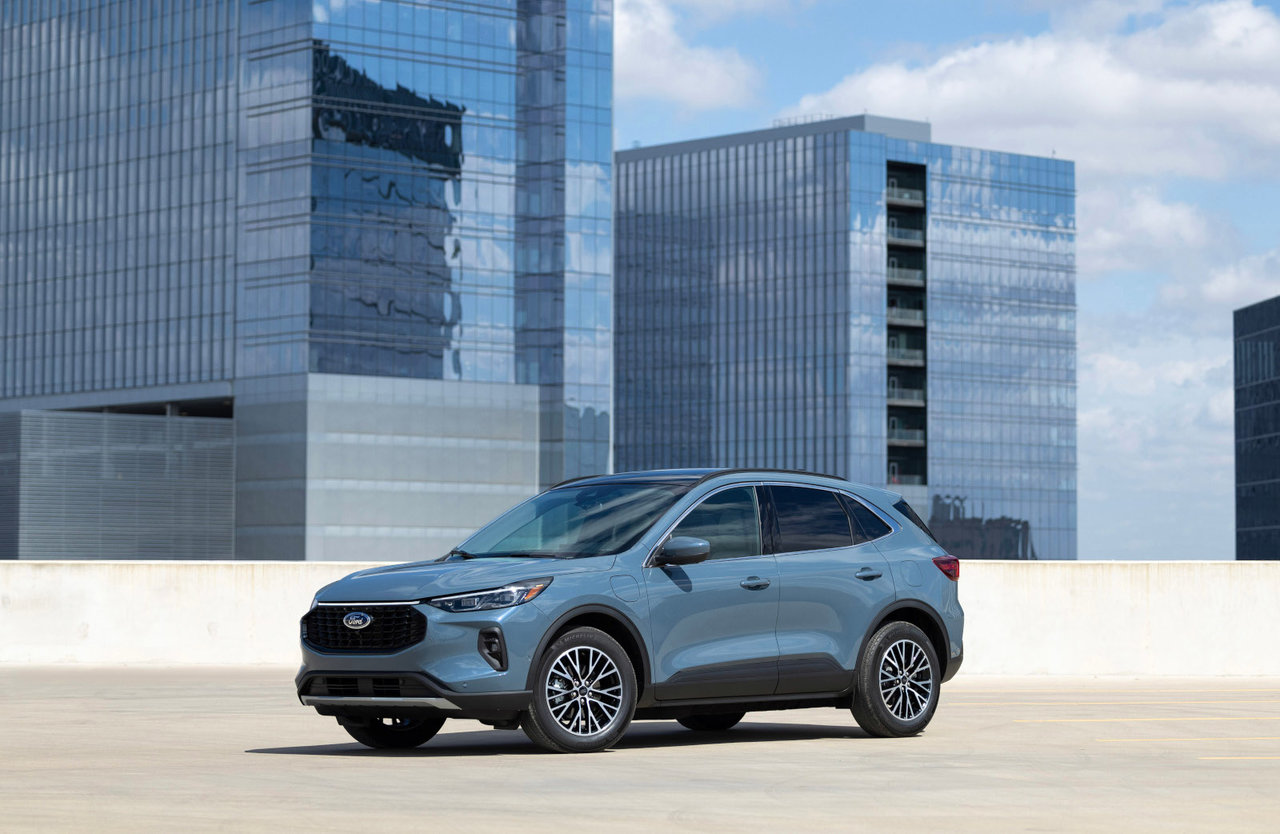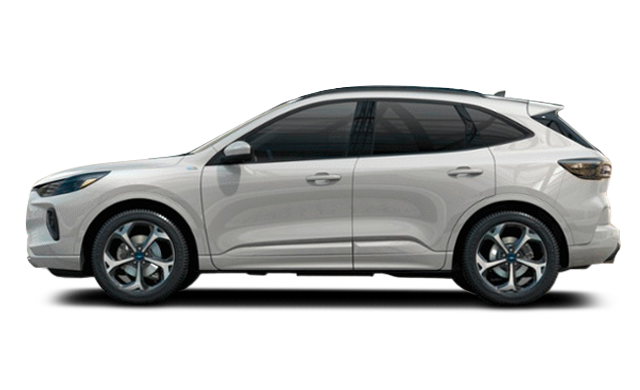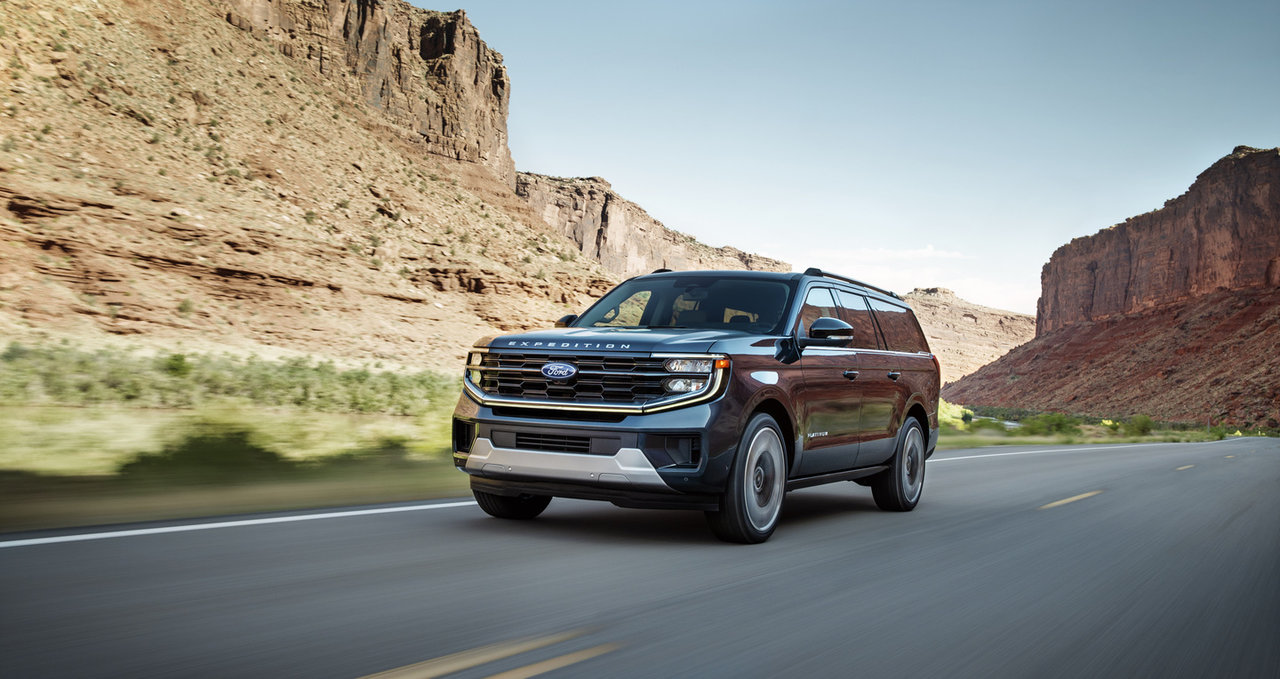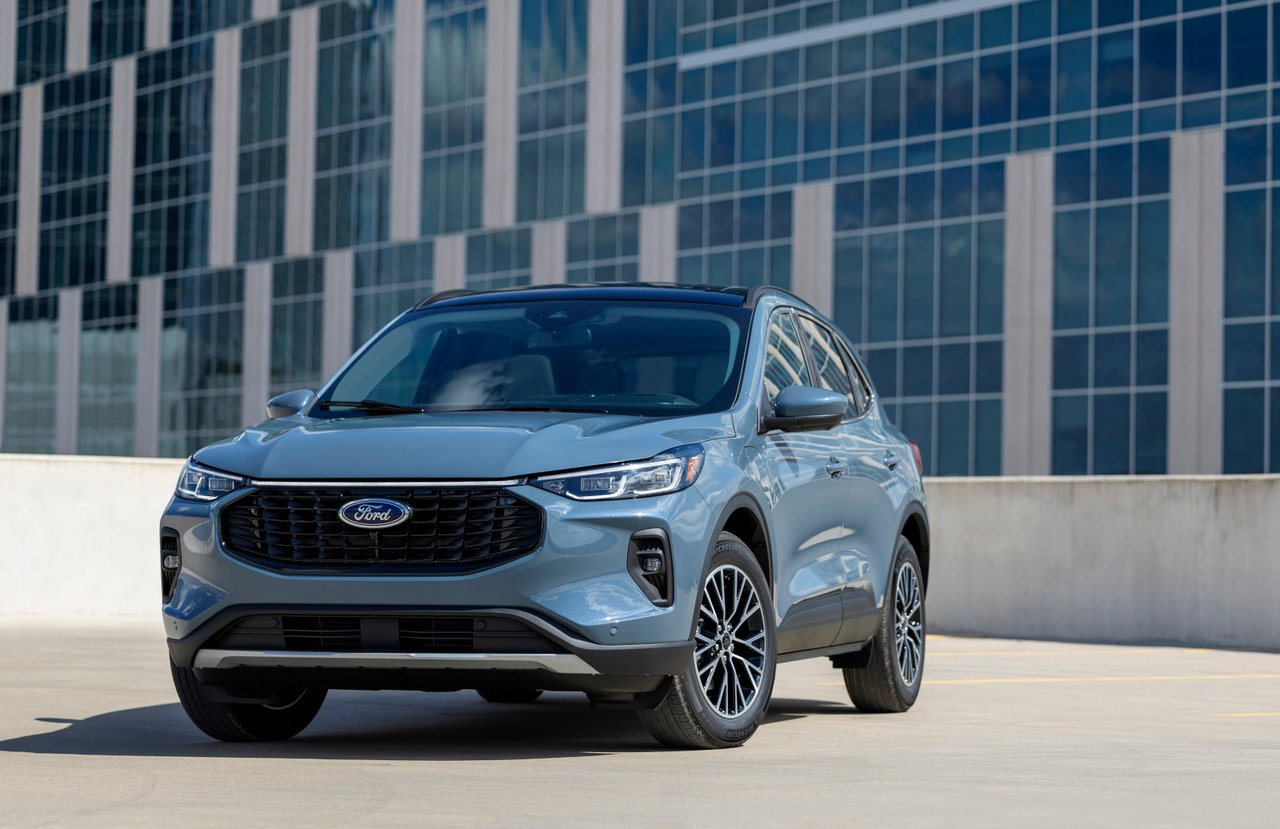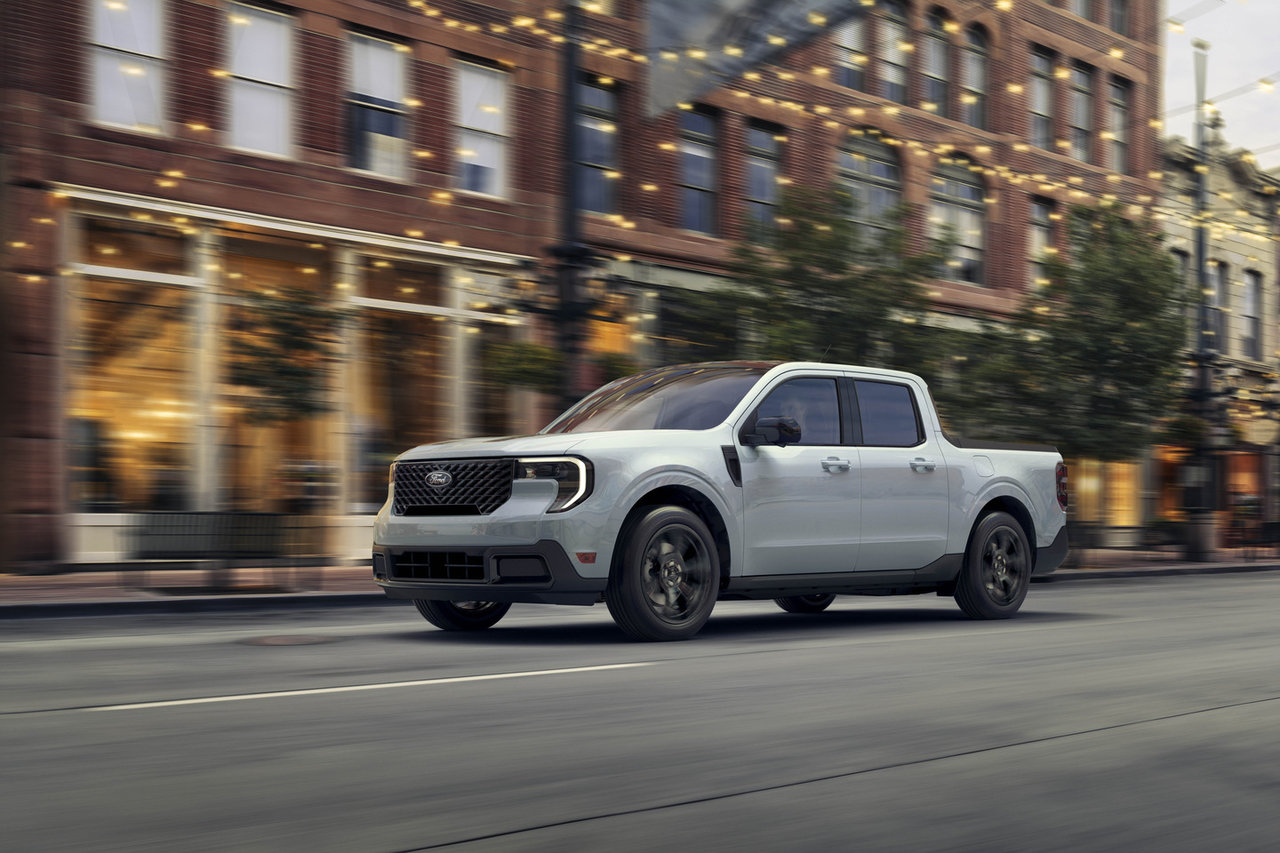The 2025 Ford Escape offers two hybrid options that deliver strong fuel economy without sacrificing the versatility you need for daily life in the Annapolis Valley. Both the standard Hybrid and Plug-In Hybrid provide smooth, responsive driving with lower fuel costs than traditional gas engines—but they work in different ways and suit different driving patterns.
If you're trying to decide between these two powertrains, the choice comes down to how you drive, where you charge, and what kind of range you need. Let's break down the differences so you can choose the one that matches your routine.
At a Glance: Escape Hybrid vs. Plug-In Hybrid
|
Feature
|
2.5L Hybrid
|
2.5L Plug-In Hybrid
|
|
Total System Horsepower
|
192 hp
|
210 hp
|
|
Electric-Only Range
|
Not applicable
|
60 km
|
|
Fuel Economy (City)
|
5.6 L/100 km
|
2.3 Le/100 km (electric + gas)
|
|
Fuel Economy (Highway)
|
6.5 L/100 km
|
6.3 L/100 km (gas only)
|
|
Fuel Economy (Combined)
|
6.0 L/100 km
|
5.9 L/100 km (gas only)
|
|
Cargo Capacity (Behind 2nd Row)
|
974 L
|
974 L
|
|
Max Cargo Capacity
|
1,721.6 L
|
1,721.6 L
|
|
Drivetrain
|
FWD or AWD
|
FWD only
|
|
Charging Required
|
No
|
Optional (runs as hybrid if not plugged in)
|
How Each System Works
The 2.5L Hybrid uses a 2.5-litre four-cylinder engine paired with an electric motor and a battery pack. The system automatically switches between gas and electric power—or uses both together—based on driving conditions. During light acceleration or coasting, the electric motor does most of the work. When you need more power, the gas engine kicks in. The battery recharges through regenerative braking, which captures energy normally lost when you slow down. You never plug it in.
The 2.5L Plug-In Hybrid (PHEV) uses the same basic setup but with a larger battery pack that you can charge from an external power source. This gives you up to 60 km of all-electric range, meaning you can drive short distances without using any gas at all. Once the electric range runs out, the vehicle operates like a regular hybrid, using both gas and electric power together. If you forget to plug in or don't have access to charging, it still runs as a hybrid—no different from the standard version.
Daily Driving: Which One Fits Your Commute?
For drivers in the Annapolis Valley, your typical routine plays a big role in which powertrain makes sense.
The standard Hybrid works well if you drive a mix of town and highway miles. A drive from Kentville to Halifax and back is about 200 km—well within the Hybrid's range on a single tank. You'll see the best fuel economy in stop-and-go traffic around town, where the electric motor handles most of the work. On the highway, the gas engine takes over, but you'll still average 6.5 L/100 km, which is significantly better than most gas-only SUVs.
The Plug-In Hybrid shines if your daily driving stays within 60 km. Running errands around Kentville, commuting to New Minas, or making short trips to Wolfville can be done entirely on electric power if you charge overnight. That means zero fuel use for your daily routine. For longer trips—like driving to Halifax or Yarmouth—the vehicle automatically switches to hybrid mode, and you'll get fuel economy similar to the standard Hybrid.
Charging the Plug-In Hybrid
The Plug-In Hybrid includes a Level 1 charging cable that plugs into a standard 120V household outlet. A full charge takes about 10 to 11 hours, which works fine if you plug in overnight. If you want faster charging, you can install a Level 2 home charger (240V), which can fully charge the battery in about 3.5 hours.
Public charging stations are available in Kentville, Wolfville, and other Valley communities, but most PHEV owners charge at home. The beauty of the Plug-In Hybrid is that charging is optional—if you don't have access to a plug, the vehicle still runs as a hybrid and delivers solid fuel economy.
For urban drivers with access to charging, the PHEV can drastically reduce fuel costs. If your daily driving stays within the 60 km electric range, you might fill the gas tank only once a month or less. For longer trips, the hybrid system ensures you're never stranded without power.
Performance and Power
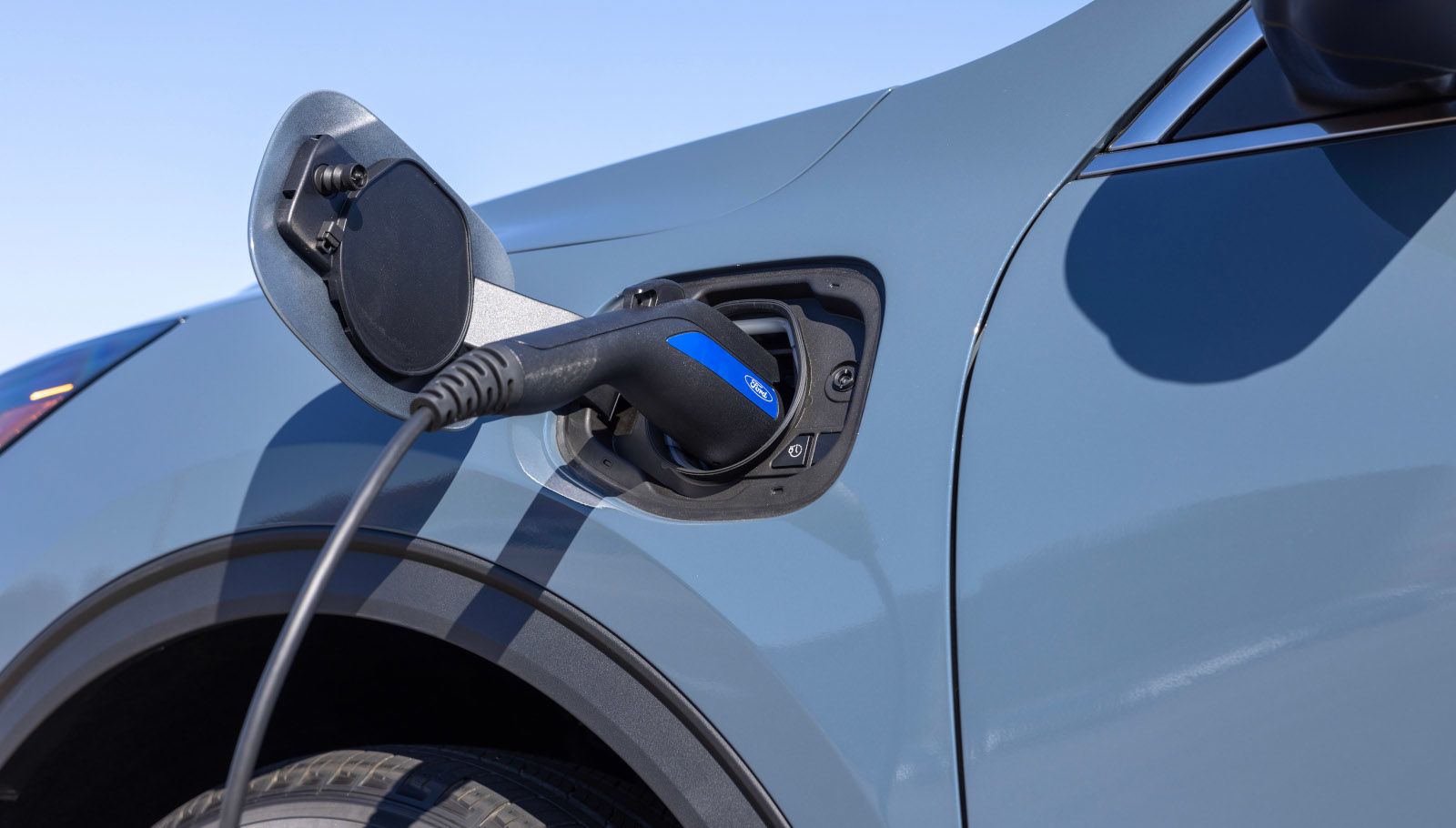
Both powertrains deliver smooth, responsive acceleration, but the Plug-In Hybrid has a slight edge in total system horsepower. The standard Hybrid produces 192 horsepower, which is more than enough for merging onto the 101, passing slower traffic, and handling hills. The Plug-In Hybrid bumps that up to 210 horsepower, giving you a bit more punch when you need it.
The difference isn't dramatic in everyday driving—both feel quick and confident. The real benefit of the PHEV's extra power shows up when you're carrying a full load of passengers and gear or accelerating from a stop in electric mode.
Both powertrains use an electronic continuously variable transmission (eCVT), which provides seamless power delivery without the gear hunting you sometimes feel in traditional automatics. The system is quiet and smooth, making both versions of the Escape comfortable for long drives.
Cargo Space and Versatility
Good news: both Hybrid and Plug-In Hybrid models offer the same cargo capacity. You get 974 litres behind the second row and up to 1,721.6 litres with the seats folded flat. The larger battery pack in the PHEV doesn't eat into your cargo space, so you're not sacrificing practicality for electric range.
The sliding second-row seats (on Hybrid models only, not PHEV) let you adjust legroom based on what you're carrying. Slide the seats forward for more cargo room, or push them back for extra passenger comfort. The 60/40 split-fold design makes it easy to carry long items like lumber or kayaks while still seating passengers.
Both powertrains are rated to tow up to 680 kg (1,500 lbs) when properly equipped with the Class II Trailer Tow Package. That's enough for a small utility trailer, lightweight camper, or a pair of ATVs—perfect for weekend getaways around the Maritimes.
All-Wheel Drive: Hybrid Only
Here's one key difference: the standard Hybrid is available with Intelligent All-Wheel Drive, which adds traction and stability for winter driving or rough roads. The system automatically engages the rear wheels when it detects slippage, then disconnects them to save fuel when AWD isn't needed.
The Plug-In Hybrid is front-wheel drive only. If you regularly drive in snow, on gravel roads, or in conditions where AWD would help, the standard Hybrid might be the better choice. That said, front-wheel drive with good winter tires handles Nova Scotia winters just fine for most drivers.
Fuel Economy and Costs
The standard Hybrid delivers 5.6 L/100 km in the city, 6.5 L/100 km on the highway, and 6.0 L/100 km combined. Those numbers put it among the most efficient compact SUVs available. Over a year of typical driving, you'll save hundreds of dollars compared to a gas-only vehicle.
The Plug-In Hybrid's fuel economy depends on how often you charge. If you're driving mostly on electric power, your gas consumption could drop to nearly zero. The official combined rating is 2.3 Le/100 km (litres equivalent per 100 km), which factors in electric driving. On gas only, the PHEV gets 5.9 L/100 km combined—essentially the same as the standard Hybrid.
The PHEV costs more upfront than the Hybrid, but if you drive short distances and charge regularly, the fuel savings can offset the difference over time. There are also federal and provincial incentives available for plug-in hybrid vehicles, which can reduce the purchase price.
Technology and Features
Both Hybrid and Plug-In Hybrid models come with the same tech and safety features. Standard equipment includes:
- Ford Co-Pilot360: Pre-Collision Assist with Automatic Emergency Braking, BLIS (Blind Spot Information System) with Cross-Traffic Alert, Lane-Keeping System, and rear-view camera
- SYNC 4 with 8-inch touchscreen: Wireless Apple CarPlay and Android Auto compatibility
- Dual-zone climate control: Driver and passenger set their own temperature
- Sliding second-row seats (Hybrid only)
Available upgrades include a 13.2-inch touchscreen, 12.3-inch digital instrument cluster, 360-degree camera, wireless charging pad, and the B&O Sound System with 10 speakers.
The Plug-In Hybrid adds a charge port and cable management, along with a display that shows electric range and battery status. The FordPass app lets you monitor charging, precondition the cabin, and check your vehicle's status remotely.
Which One Should You Choose?
Choose the 2.5L Hybrid if you:
- Drive a mix of town and highway miles
- Want AWD for winter driving or rough roads
- Don't have easy access to charging
- Prefer a lower upfront cost
- Drive longer distances regularly
Choose the 2.5L Plug-In Hybrid if you:
- Drive mostly short distances (under 60 km per day)
- Have access to home or workplace charging
- Want to minimize or eliminate gas use for daily driving
- Qualify for electric vehicle incentives
- Value the extra horsepower and electric-only range
Both powertrains deliver strong fuel economy, smooth performance, and the versatility the Escape is known for. The choice comes down to your daily routine and whether you can take advantage of the PHEV's electric range.
Experience Both at Valley Ford in Kentville
The best way to decide which Escape Hybrid is right for you is to drive them both. Visit Valley Ford in Kentville to compare the Hybrid and Plug-In Hybrid side by side, ask questions about charging and fuel economy, and find the model that fits your life in Nova Scotia.


